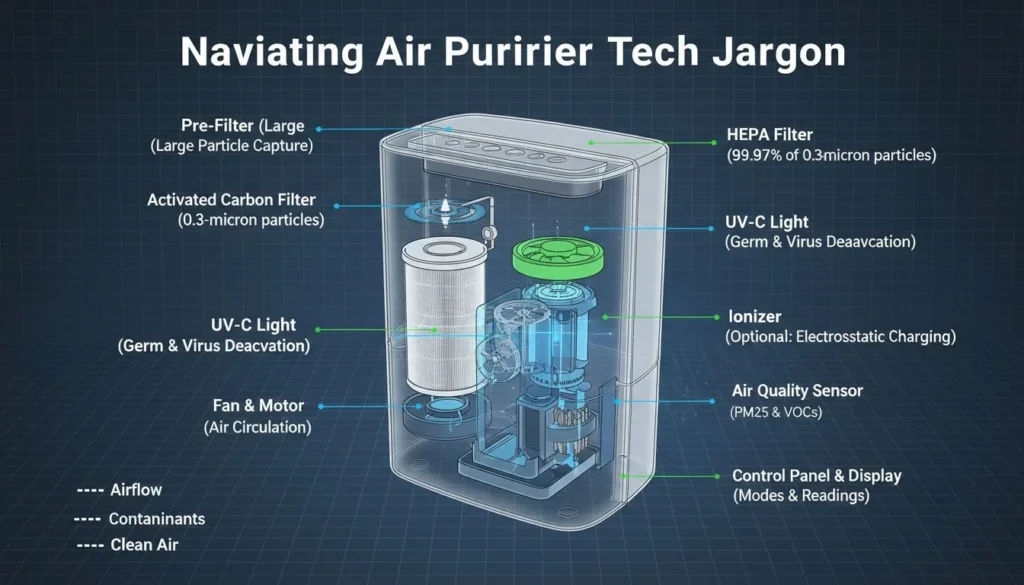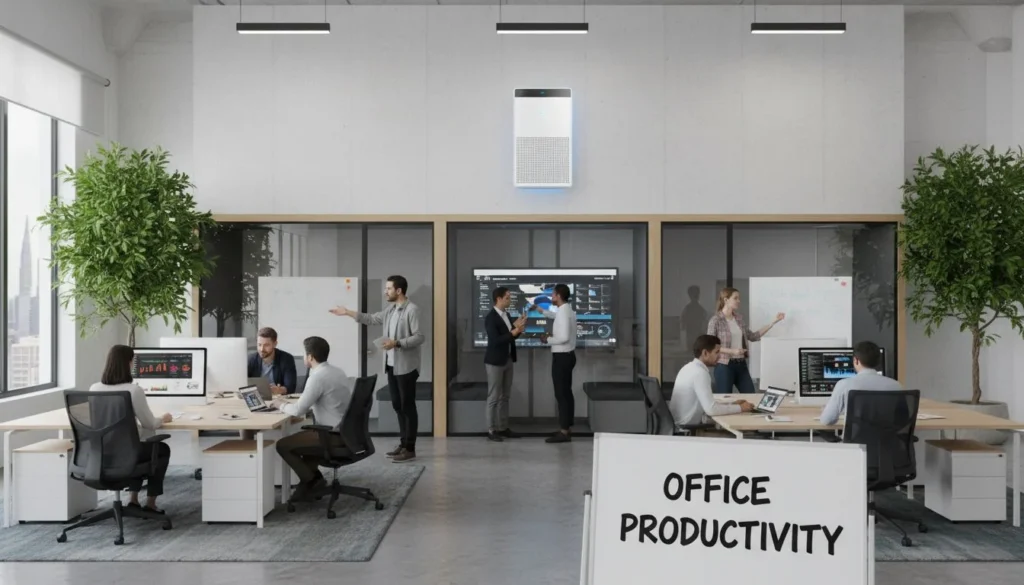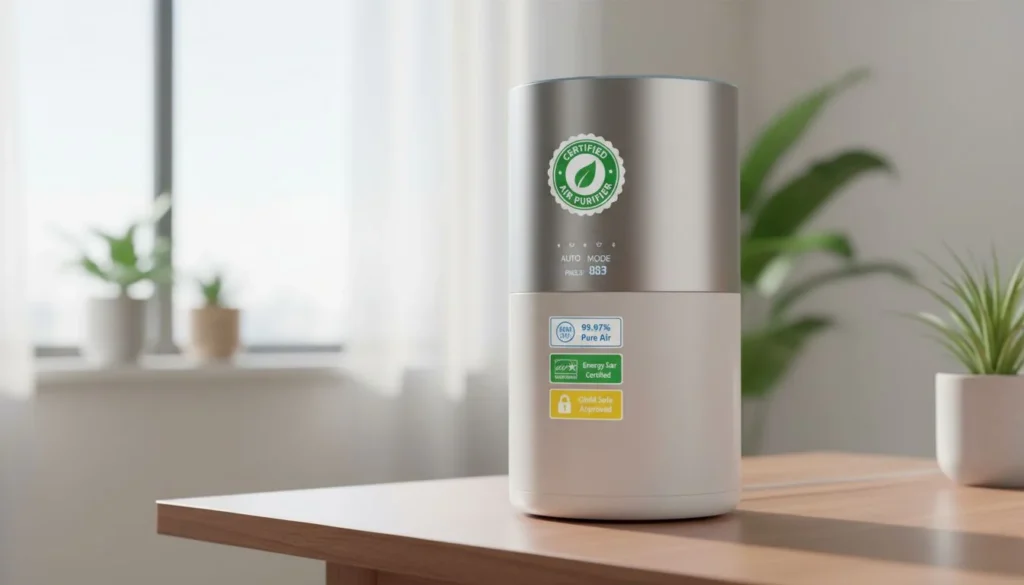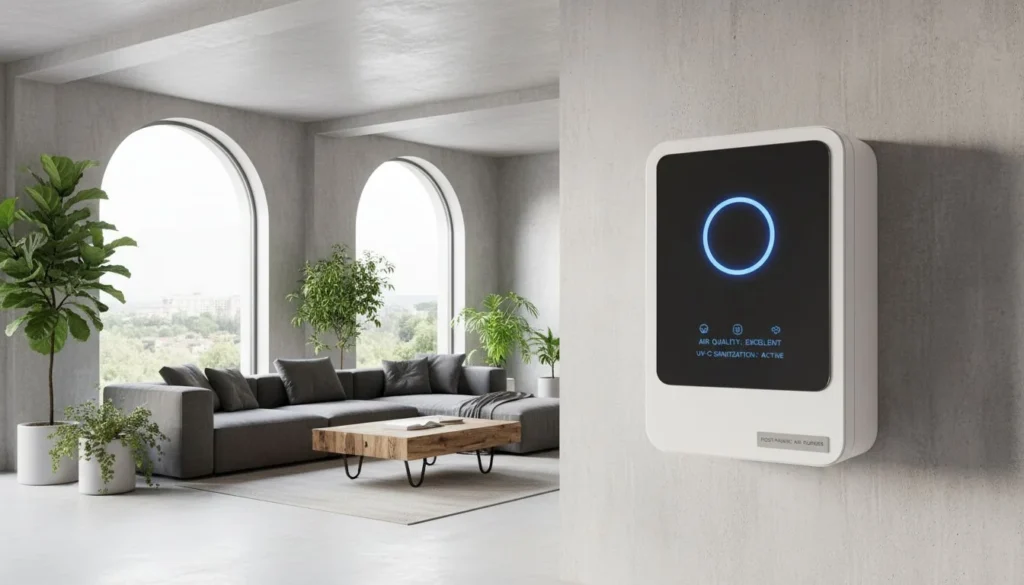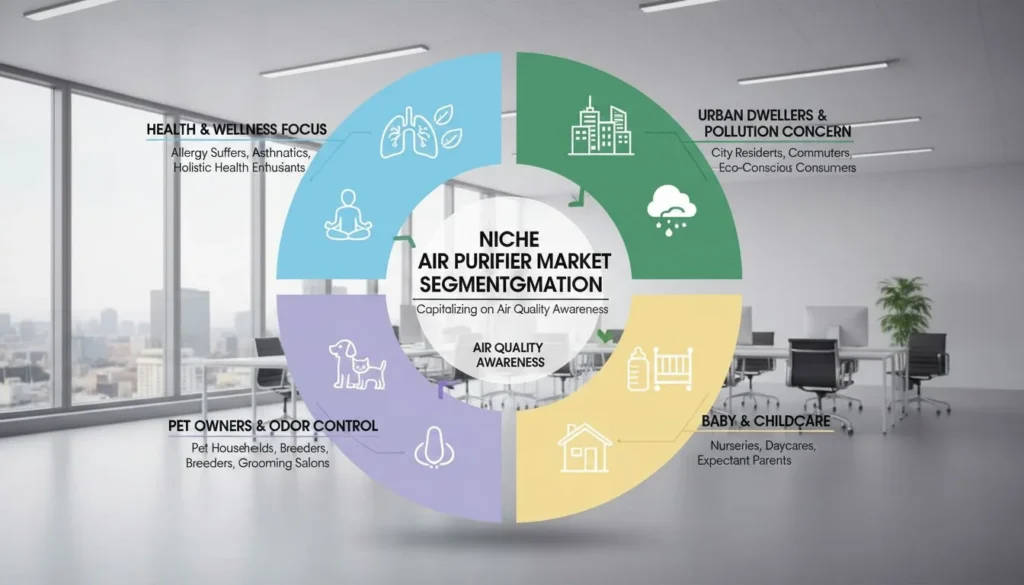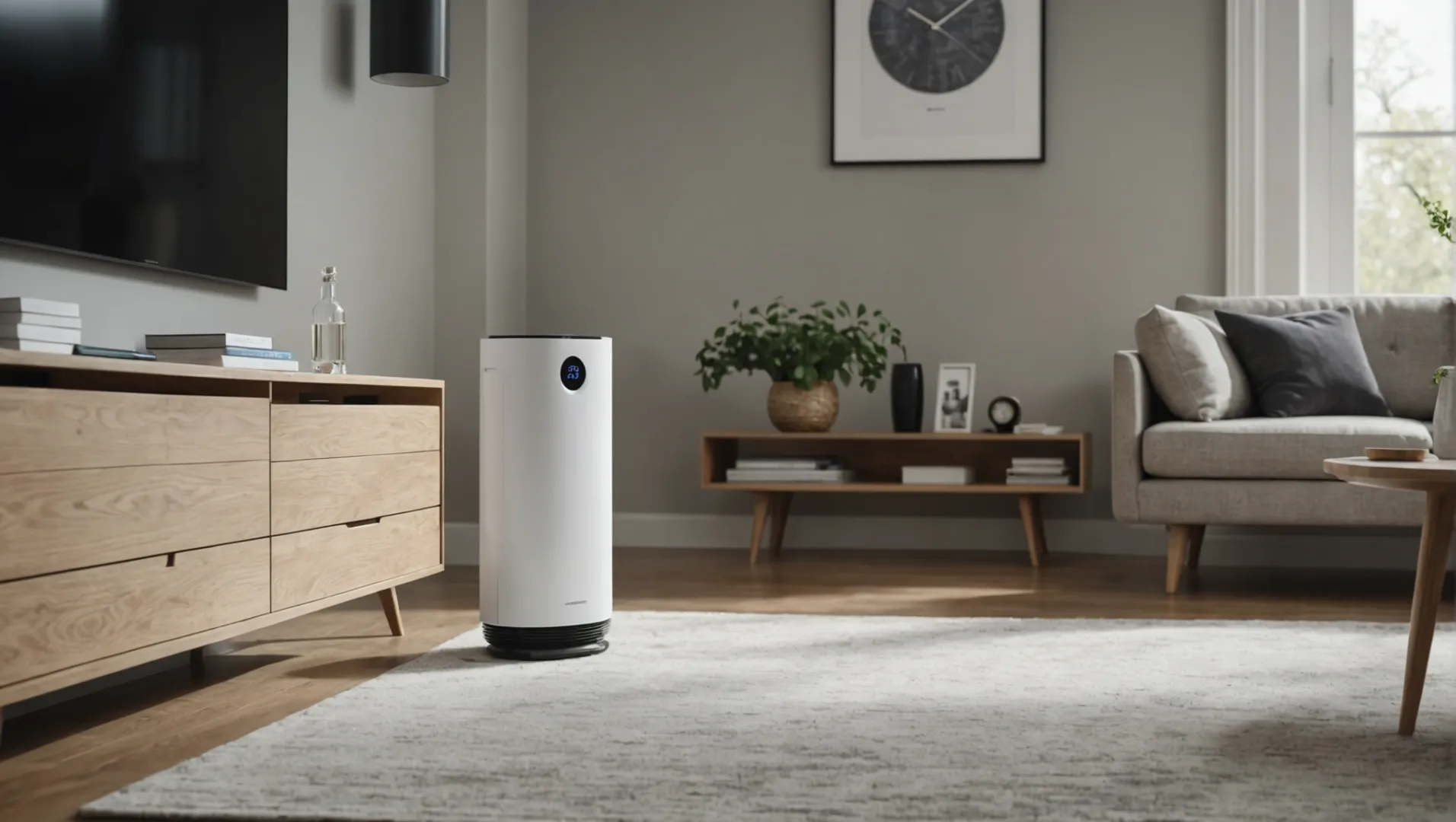
In a world filled with options, how do you make your air purifier shine?
Differentiating air purifier products in a competitive market involves targeting specific consumer segments, incorporating advanced technology, and highlighting unique features that address customer needs.
Let’s explore tailored strategies like market segmentation and technological innovation that can elevate your air purifier above the competition!
Advanced filtration technology is crucial for air purifier success.True
Advanced filtration, like HEPA filters, captures 99.97% of particles.
What Are the Key Features Customers Look for in Air Purifiers?
In today's competitive air purifier market, understanding customer preferences is vital.
Key features customers seek in air purifiers include advanced filtration technology, noise levels, coverage area, ease of use, and smart connectivity options.
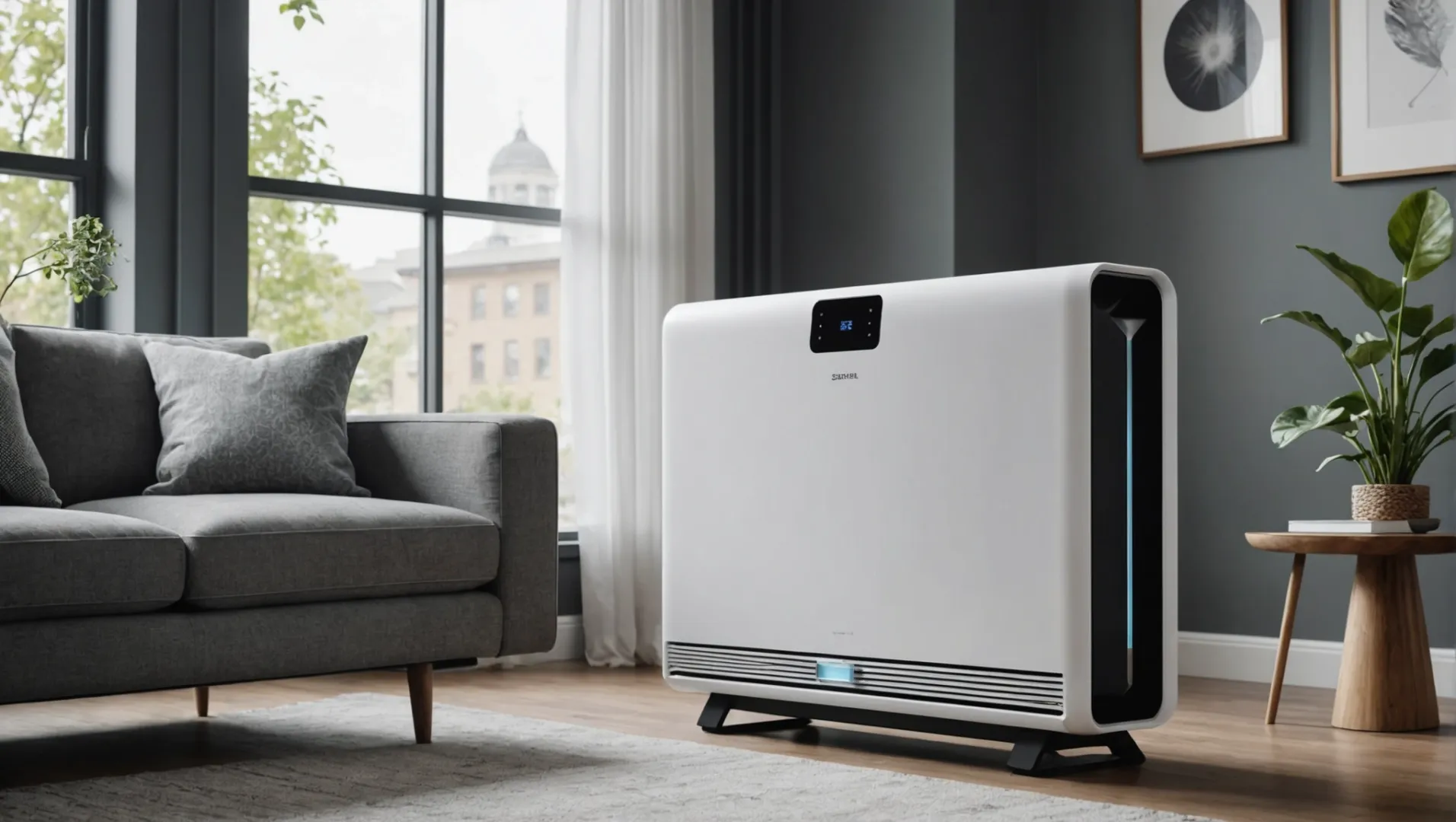
Filtration Technology
One of the primary features consumers evaluate is the filtration technology1 an air purifier employs. High-efficiency particulate air (HEPA) filters are popular for their ability to capture up to 99.97% of particles as small as 0.3 microns. Some advanced models incorporate activated carbon filters to remove odors and gases, or UV light to kill bacteria and viruses.
Noise Levels
Noise level is a crucial consideration, especially for those who plan to use the air purifier in bedrooms or offices. Customers often look for devices that operate quietly without compromising on performance. Purifiers with multiple speed settings allow users to adjust the noise level according to their environment.
Coverage Area
The size of the room that an air purifier can effectively service is another critical factor. Consumers typically look for devices that match or exceed the square footage of their intended space. Larger coverage areas are particularly important for open-plan homes or offices.
| Room Size | Recommended CADR (Clean Air Delivery Rate) |
|---|---|
| Small (up to 200 sq ft) | 100-150 CADR |
| Medium (200-400 sq ft) | 150-250 CADR |
| Large (400+ sq ft) | 250+ CADR |
Ease of Use and Maintenance
Users value simplicity in operation and maintenance. Features like intuitive controls, filter change indicators, and easy-to-clean components enhance user experience. Models with washable filters or longer-lasting filters reduce ongoing costs, appealing to budget-conscious buyers.
Smart Connectivity
With the rise of smart homes, connectivity features such as app control, air quality monitoring, and integration with smart home systems like Alexa or Google Home are becoming increasingly sought-after. These features not only offer convenience but also provide users with valuable insights into their home's air quality.
Understanding these key features helps manufacturers tailor their products to meet specific consumer needs, leading to increased satisfaction and brand loyalty.
HEPA filters capture 99.97% of particles.True
HEPA filters are highly effective, capturing particles as small as 0.3 microns.
Smart connectivity is not important for air purifiers.False
Smart connectivity offers convenience and air quality insights, enhancing value.
How Can Targeting Specific Consumer Segments Enhance Product Appeal?
Understanding your audience is key to standing out in the air purifier market.
Targeting specific consumer segments can enhance product appeal by aligning features and messaging with the distinct needs and preferences of each group.

Understanding Consumer Segments
To effectively target specific consumer segments, it's crucial to first identify and understand these groups' unique characteristics and needs. For instance, pet owners may prioritize air purifiers that tackle pet dander and odors, while new parents might be concerned with air quality for their infants, seeking purifiers with enhanced filtration capabilities.
Customizing Product Features
By tailoring products to meet the demands of these distinct segments, companies can significantly increase their product's appeal. Consider developing specialized filters, such as Activated Carbon Filters2 for pet owners to neutralize odors and trap fur, or advanced HEPA filters designed to capture fine particles that are more likely to affect infants.
| Segment | Key Feature |
|---|---|
| Pet Owners | Activated Carbon Filters, Low Noise Level |
| New Parents | Advanced HEPA Filters, Baby-Friendly Accessories |
| Health Enthusiasts | Anti-Microbial Filters, Long-lasting Performance |
Positioning and Messaging
The way a product is positioned and marketed can also impact its appeal to various consumer segments. Marketing campaigns should be crafted to resonate with each group's values and concerns. For example, positioning a product as a 'must-have for healthy living' may attract health enthusiasts, while emphasizing quiet operation and cost-effectiveness can appeal to budget-conscious families.
Leveraging Technology
Integrating modern technologies such as IoT can further personalize experiences for specific consumer segments. Offering mobile control and real-time data on air quality can appeal to tech-savvy customers who appreciate convenience and connectivity.
Real-Life Application
Consider the story of a company that successfully targeted multiple consumer segments by launching a range of air purifiers: one model optimized for large spaces with high CADR (Clean Air Delivery Rate) for families, and another compact, portable version for urban dwellers. By focusing on the unique needs of these groups, they managed to capture a larger market share and increase brand loyalty.
By strategically targeting consumer segments, companies not only enhance the appeal of their products but also build deeper connections with their audience, leading to sustained business growth.
Pet owners prefer purifiers with low noise levels.True
Pet owners often prioritize quiet devices to avoid disturbing their pets.
Advanced HEPA filters are not ideal for infants.False
Advanced HEPA filters are ideal for capturing fine particles affecting infants.
What Role Does Technology Play in Differentiating Air Purifiers?
In a rapidly evolving market, technological advancements are key to setting air purifiers apart.
Technology differentiates air purifiers by enhancing filtration efficiency, integrating smart features, and tailoring solutions for specific environmental needs.
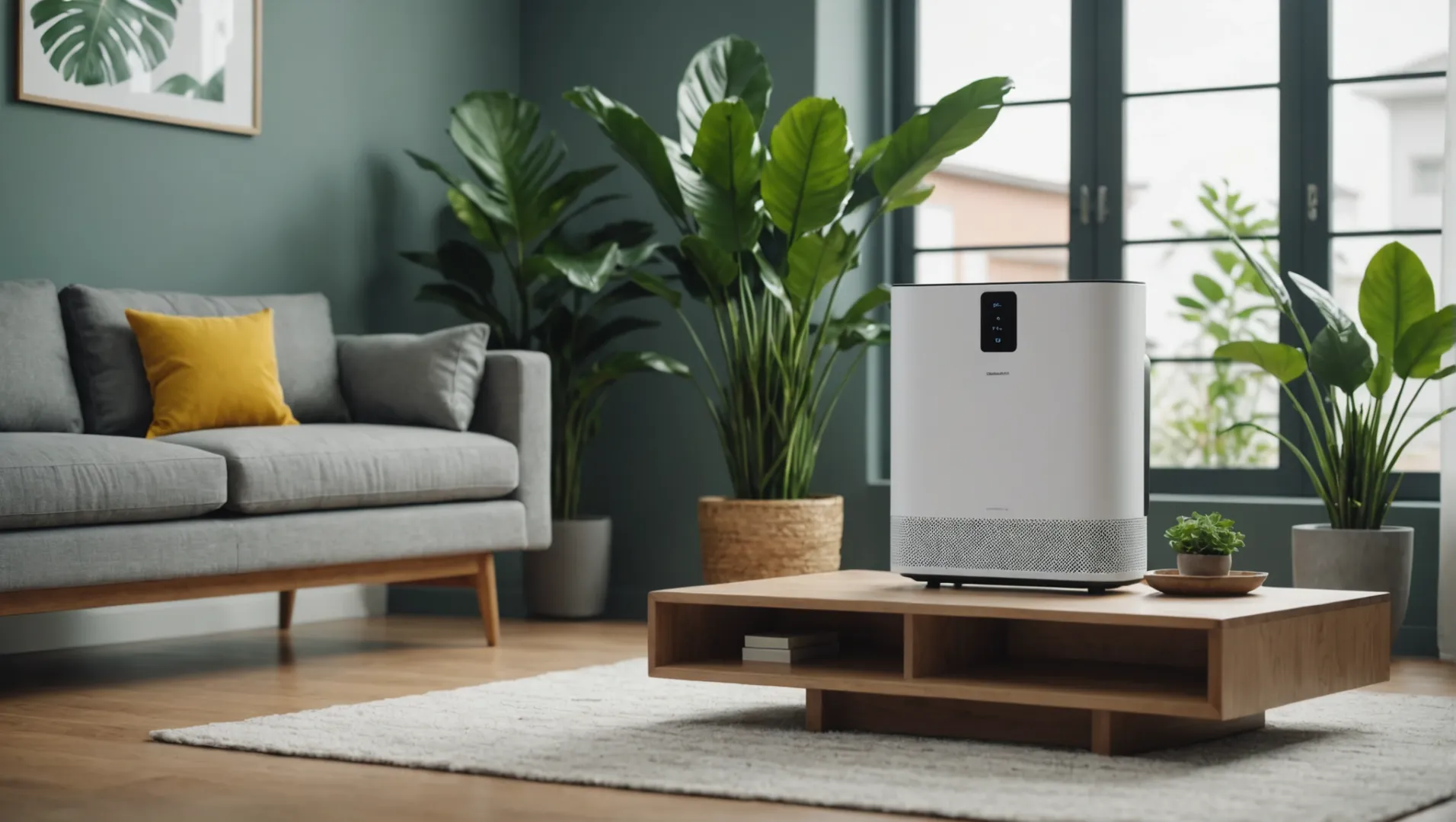
Enhancing Filtration Efficiency
One of the most significant technological advancements in air purifiers is the improvement in filtration systems3. High-efficiency particulate air (HEPA) filters are now commonly enhanced with activated carbon to capture odors and gases, making them ideal for households with pets or smokers. Additionally, some purifiers feature advanced technologies like electrostatic precipitators or UV light to combat microbes and allergens more effectively.
Smart Features and Connectivity
The integration of Internet of Things (IoT)4 technology has transformed air purifiers into smart devices that offer remote control through mobile apps, enabling users to monitor air quality and adjust settings from anywhere. Sensors that detect pollutants and automatically adjust the purifier's operation are becoming standard, providing users with real-time data and a hands-free experience.
| Smart Feature | Benefit |
|---|---|
| Mobile App Control | Convenience and remote monitoring |
| Air Quality Sensors | Automatic adjustments for optimal performance |
Tailoring Solutions for Specific Needs
Advanced technology allows for customization in air purifiers to cater to specific customer needs. For instance, air purifiers designed for nurseries might include ultra-quiet operation and a night mode feature to ensure a baby's sleep is undisturbed. Similarly, purifiers targeting those with severe allergies may use specialized filters to capture pollen and dust mites more efficiently.
By leveraging these technological advancements, manufacturers can differentiate their products in a saturated market, providing tailored solutions that meet the diverse needs of consumers.
HEPA filters alone are sufficient for all air purification needs.False
HEPA filters need enhancements like activated carbon for odors.
IoT integration allows remote control of air purifiers via apps.True
IoT enables app-based remote monitoring and control of purifiers.
How Can Effective Marketing Tactics Boost Your Air Purifier's Visibility?
Discover the marketing strategies that can propel your air purifier brand to new heights.
Effective marketing tactics for air purifiers include leveraging digital advertising, social media engagement, influencer partnerships, and content marketing to enhance brand visibility and customer engagement.

Leveraging Digital Advertising
In today's digital age, online advertising is a powerful tool. Platforms like Google Ads allow you to target specific keywords that potential customers are searching for, such as "best air purifier for allergies" or "quiet air purifier for bedroom." This ensures that your product appears prominently in search results.
Utilizing Social Media Engagement
Social media platforms such as Instagram, Facebook, and Twitter offer an excellent opportunity to engage directly with your audience. Share informative content about the benefits of your air purifiers, post customer testimonials, and host interactive sessions like Q&As or live demos. This builds a community around your brand and fosters trust among potential buyers.
Partnering with Influencers
Collaborating with influencers who align with your brand values can significantly boost your product's visibility. Influencers have established audiences who trust their recommendations. For instance, partnering with a health and wellness influencer to showcase your air purifier's ability to improve indoor air quality can be highly effective.
Crafting Compelling Content Marketing
Content marketing is about creating valuable content that answers questions or solves problems for your potential customers. This could be through blog posts, videos, or infographics. Topics might include "How to Choose the Right Air Purifier for Your Home" or "Understanding Different Types of Air Filters." By providing useful information, you position your brand as an industry expert.
Implementing SEO Strategies
Optimizing your website and product pages for search engines ensures that customers can easily find you. Use relevant keywords, meta descriptions, and alt texts for images to improve search engine rankings. Consider creating a FAQ section addressing common queries about air purifiers.
By incorporating these marketing tactics, you can effectively increase the visibility of your air purifier products and establish a robust presence in the market. For more detailed strategies on leveraging digital tools, check out our guide on social media strategies5 and influencer partnerships6.
Digital ads boost air purifier visibility.True
Digital advertising targets specific keywords, increasing product visibility.
Influencers can't enhance air purifier sales.False
Influencer partnerships can significantly boost product visibility and sales.
Conclusion
Embrace innovation and consumer insights to stand out in the air purifier market.
-
Discover top filtration technologies enhancing air purifier performance.: We've tested more than 60 air purifiers in the past nine years, and the exceptional Coway Airmega AP-1512HH Mighty is our top pick among them. ↩
-
Learn how Activated Carbon Filters combat odors and improve air quality.: Activated carbon filters are used by some air purifier manufacturers to trap volatile organic compounds, molecules responsible for odours and some recognized ... ↩
-
Discover cutting-edge filtration technologies enhancing air purification efficiency.: This article's top 20 technologies are propelling major industrial breakthroughs and meeting the increasing need for cleaner air in a variety of applications. ↩
-
Explore the benefits of smart features in modern air purifiers.: By preserving ideal air quality and getting rid of bothersome odors and pollutants, smart air purifiers with IoT integration help create a ... ↩
-
Explore comprehensive strategies to enhance brand visibility through social media.: Put simply, a social media strategy is a comprehensive plan that outlines your social media goals, the tactics used to achieve them and metrics ... ↩
-
Learn to leverage influencer partnerships for boosting product visibility.: Find your influencer partners · Reach out to propose a collaboration · Agree on your terms · Monitor the results of the collaboration. ↩


